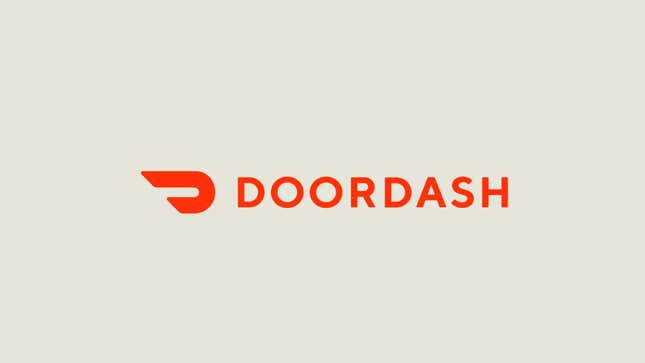
Delivery platform DoorDash has been at the top of the public’s most hated gig economy value extraction firms for some time, owing largely to its prior policy of subsidizing its wages with customers’ tips. According to a study released today, even with that policy repealed, the efficiency of DoorDash’s race-to-the-bottom pay structure nets workers an estimated $1.45 per hour.
The findings are part of a report released today by worker rights non-profit Working Washington, which crunched the pay data from 229 deliveries submitted by Dashers from around the country.
DoorDash claims its pay model results in gross hourly earnings of over $18 per hour—and Working Washington found a less generous but similar figure of $15.76. The difference in real wages lies entirely in how these metrics are being measured—with DoorDash likely employing some of the same creative math as Uber and other gig work firms who have touted high earnings potential but continue to battle headlines of a contingent workforce scraping together poverty wages which seem to shrink a bit more every year.
What Working Washington smartly zeroes in on is DoorDash’s use of the ill-defined term “active hour.” It’s not clear if this takes into account the time spent searching for a delivery on the app, the drive to a restaurant, wait time for the order to be prepared, the drive to the customer, or the “deadheading” time back home. Rideshare companies have been known to slyly remove some of these job-states from their calculations.
“We count time worked as time from acceptance to delivery—that is, we also do not count waiting-for-a-job time in this calculation,” Sage Wilson, a spokesperson for Working Washington, told Gizmodo over email. “Dashers estimated the time—at the job level, that’s fairly easy to do if you have screenshotted the offer screen.” It’s likely this study was more realistic with its idea of what a working hour looks like than DoorDash. It also bothered to take into account the bare minimum costs associated with this sort of work: specifically, fuel, vehicle depreciation, and payroll taxes.
None of those numbers come from Working Washington itself. The 7.65-percent FICA tax is something all contractors deal with, and the deductible mileage rate is a number generated directly by the IRS. Even these represent the best-case scenario for a Dasher, Wilson wrote. “[Additional taxes] would vary by state, which is why we did not account for it here. Our goal was to make a calculation where the figure meant the same amount in a worker’s pocket as it would mean if it were a W2 pay amount. That said, it doesn’t include things like the cost of commercial insurance, paid sick days, buying into a state paid family leave program, etc. We were intentionally *conservative* on that score.”
Even with all those consolations made for the sake of fairness, Working Washington still found that, after expenses, only 11-percent of jobs paid above the federal minimum wage—a laughably insufficient standard that has not gone up in over a decade.
While mileage in the study was self-reported and the number of jobs is a very small portion of the total amount the platform facilitates in a given day, these figures—and the similarly damning studies on other gig work platforms’ real wages—suggest DoorDash has a lot of explaining to do.
Update 2/21/20 12:54pm Eastern: A DoorDash spokesperson provided the following statement:
Last year, we rolled out a new pay model to better serve Dashers and consumers alike—and committed that Dashers would earn more overall as part of that new model. We are proud to have delivered on that promise and worked with a third party economics firm, Beacon Economics, to ensure we were true to our word. Overall Dasher earnings per active hour—which counts all on-delivery time and includes tips—have increased, as has the amount that DoorDash pays Dashers. When determining the amount that DoorDash pays Dashers, we do not look at the amount a customer tips, and every dollar a customer tips is an extra dollar in their Dasher’s pocket.
DoorDash remains committed to ensuring Dashers have the information they need to decide which deliveries they want to do, and Dashers see a breakdown in their earnings after each delivery. We also began rolling out new features in December to help Dashers better track their earnings over time.
Have a tip about your awful job? Get in touch with our reporters via email, Keybase, or Secure Drop.